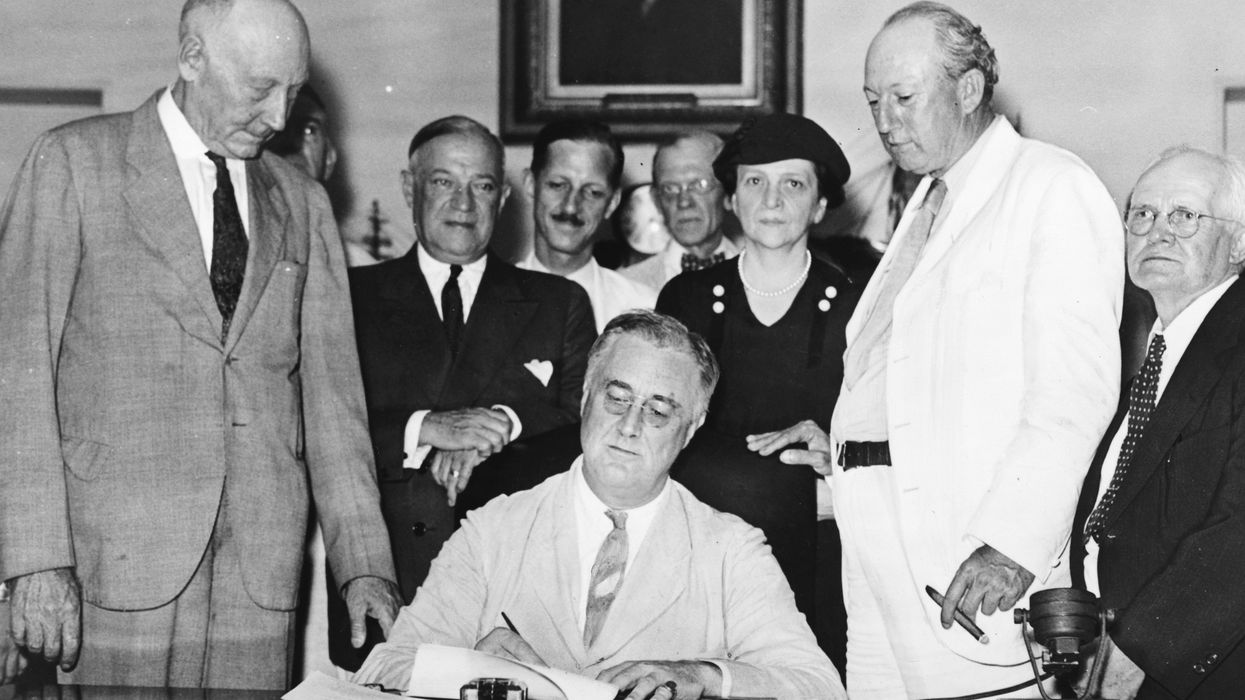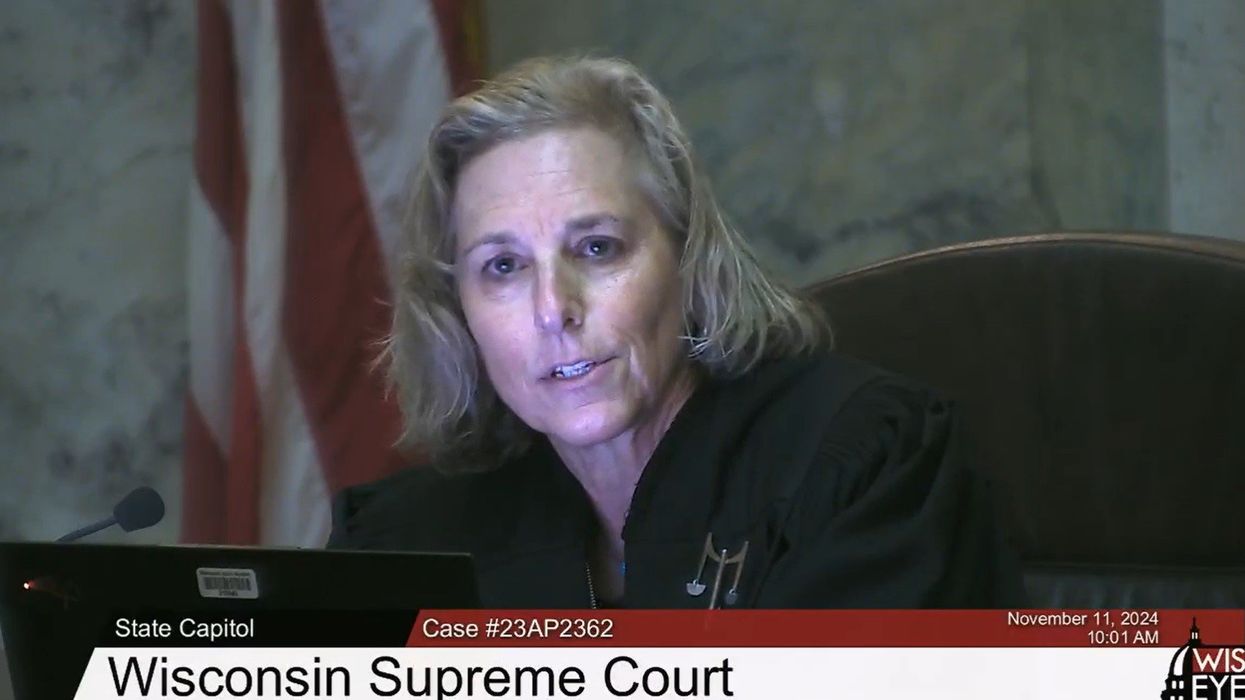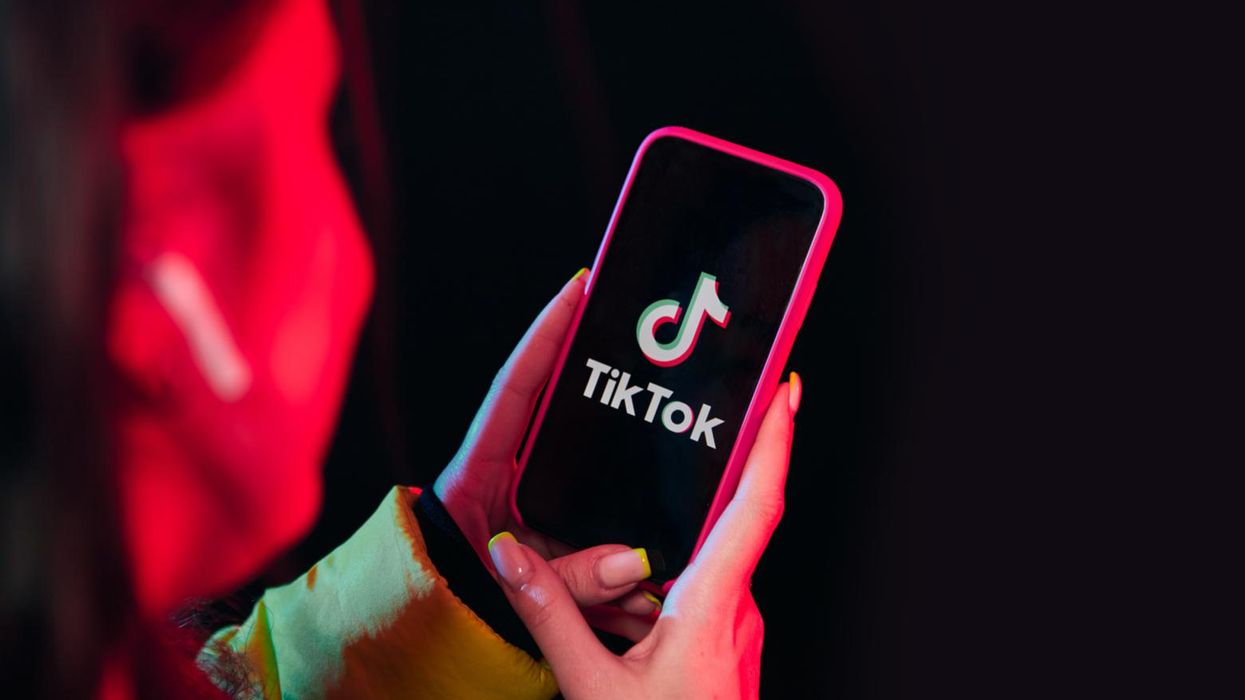Regulators had a chance to fix the meat industry’s false advertising problem. They failed.
by Kenny Torrella
VOX
Nov 14, 2024,

A flock of large white broiler chickens, approximately 10 weeks old, are ready to be processed.

A flock of large white broiler chickens, approximately 10 weeks old, are ready to be processed.
Monica Fecke/Moment via Getty Images
An overwhelming majority of Americans say they’re concerned about the treatment of animals raised for meat, and many believe they can help by simply selecting from one of the many brands that advertise their chicken or pork as “humane.” But such marketing claims have long borne little resemblance to the ugly reality of raising animals for meat.
Nearly all farmed animals in the US live on mega factory farms, where they’re mutilated without pain relief and fattened up in dark, overcrowded warehouses before being shipped off to the slaughterhouse. Only a tiny sliver of livestock are actually reared on the small, higher-welfare farms that many companies conjure on their packaging with quaint red barns and green rolling hills — and even those operations can be rife with animal suffering.
This summer, the US Department of Agriculture (USDA) had an opportunity to fix the false advertising problem pervasive in the meat aisle when it published updated guidelines that companies must follow when making animal welfare claims on their labels. Instead, its new guidance barely changed anything.
The updated rules “remain insufficient to combat misleading label claims used to market meat and poultry products,” as the nonprofit Animal Welfare Institute put it, allowing companies “to essentially make up their own definitions with no repercussions.” (The one improvement, the organization noted, was a clearer definition of the term “pasture raised,” though that label remains poorly enforced and does not guarantee animals were raised humanely.)
Here’s how the USDA’s guidelines work: If a meat company wants to make an animal welfare or environment-related claim on its packaging, it must fill out a form with an illustration of its label and an explanation as to how the animals are raised to justify the claim; how the company will ensure the claim is valid from birth to slaughter to sale; and whether or not an independent, third-party organization certified the claim, which is optional. The USDA never conducts surprise audits, or any audits at all, to verify the company is telling the truth. It is, in essence, an honor system.
An overwhelming majority of Americans say they’re concerned about the treatment of animals raised for meat, and many believe they can help by simply selecting from one of the many brands that advertise their chicken or pork as “humane.” But such marketing claims have long borne little resemblance to the ugly reality of raising animals for meat.
Nearly all farmed animals in the US live on mega factory farms, where they’re mutilated without pain relief and fattened up in dark, overcrowded warehouses before being shipped off to the slaughterhouse. Only a tiny sliver of livestock are actually reared on the small, higher-welfare farms that many companies conjure on their packaging with quaint red barns and green rolling hills — and even those operations can be rife with animal suffering.
This summer, the US Department of Agriculture (USDA) had an opportunity to fix the false advertising problem pervasive in the meat aisle when it published updated guidelines that companies must follow when making animal welfare claims on their labels. Instead, its new guidance barely changed anything.
The updated rules “remain insufficient to combat misleading label claims used to market meat and poultry products,” as the nonprofit Animal Welfare Institute put it, allowing companies “to essentially make up their own definitions with no repercussions.” (The one improvement, the organization noted, was a clearer definition of the term “pasture raised,” though that label remains poorly enforced and does not guarantee animals were raised humanely.)
Here’s how the USDA’s guidelines work: If a meat company wants to make an animal welfare or environment-related claim on its packaging, it must fill out a form with an illustration of its label and an explanation as to how the animals are raised to justify the claim; how the company will ensure the claim is valid from birth to slaughter to sale; and whether or not an independent, third-party organization certified the claim, which is optional. The USDA never conducts surprise audits, or any audits at all, to verify the company is telling the truth. It is, in essence, an honor system.
The USDA also has an incredibly low, and often nonsensical, bar for what passes as humane treatment.
The agency states, for example, that a chicken company can use the term “humanely raised” if it feeds its birds an all-vegetarian diet, which has virtually no bearing on their welfare (chickens are omnivores).
Similarly, the agency says pork can be labeled “humanely raised” if the company provides its pigs with “proper shelter and rest areas.” By that definition, standard factory farms — which produce practically all US pork — are humane because they provide ample shelter in the form of vast, crowded warehouses where the animals have nothing to do but rest on the same concrete flooring where they defecate and urinate.

Chickens raised for meat at an operation in Maryland. Edwin Remsberg/The Image Bank via Getty Images

Pigs at a breeding farm. Chayakorn Lotongkum/iStock via Getty Images
“I think that a lot of this is out of touch with what consumers are really thinking these claims mean,” P. Renée Wicklund, co-founder of Richman Law & Policy — a law firm that takes meat, dairy, and egg companies to court over false claims — told me.
Over the last decade, the Animal Welfare Institute has requested from the USDA the applications that meat companies submitted for 97 animal welfare claims. For the overwhelming majority of them, there were either no records at all or the justifications for the labels had little to no relevance to animal welfare.
The USDA declined an interview request for this story and didn’t directly respond to numerous detailed questions. Instead, it sent a statement that read in part: “USDA continues to deliver on its commitment to fairness and choice for both farmers and consumers, and that means supporting transparency and high-quality standards.”
To be fair to the agency, it doesn’t have the authority to conduct on-farm audits, which would require an act of Congress. But it does have authority to define animal welfare claims — an authority it rarely exercises. Instead, it allows companies to define animal welfare claims themselves.
The USDA also added that it “strongly encourages” companies to validate animal welfare claims using third-party certifiers — private organizations that audit conditions on farms and license the use of their own humane labels. But a recent undercover investigation into one of the nation’s biggest “humane-certified” poultry companies shows how low third-party certification standards can be.
Chickens kicked and run over with forklifts: Inside a “humane-certified” poultry farm
Foster Farms, the 11th largest chicken company in the US, advertises meat from animals raised with supposedly “better care.” On its packaging, chickens are shown roaming free on pasture, even though the company’s conventionally raised birds will never step foot onto grass. On its website, Foster Farms says its farming is “safe, sustainable, and humane” and that its chickens are “raised on local West Coast farms” with “strenuous, high standards.”
The company also promotes its chicken as “cage-free” with “no added hormones or steroids ever.” But touting these aspects is misleading because chickens raised for meat in the US are not kept in cages — only those raised for eggs are — and it’s illegal to feed chickens hormones or steroids.
“They’re feel-good words, but they don’t have any real meaning,” veterinarian Gail Hansen told Vox.
This summer, an undercover investigator with the animal rights group Animal Outlook worked for a month on the company’s catch crew, a job that entails grabbing chickens on farms, stuffing them into crates, and loading them onto trucks bound for the slaughterhouse.
Over the course of more than a dozen shifts at multiple Foster Farms facilities, the investigator — who requested anonymity due to the covert nature of undercover investigations — documented workers slamming birds into crates, kicking and hitting chickens, and numerous instances of forklift drivers running over birds.
The investigator recalled making eye contact with a bird shortly after they were run over by a forklift. “They were being crushed and everything was being pushed forward, and they had their beak open, and they had this look on their face like they knew that they were dying. And then I watched them flap and struggle for a moment before passing,” the investigator told me.
“From a veterinary perspective, some of the things are just horrific,” Hansen said.
The investigator chalked up most of the cruelty to the chaotic, fast-paced work environment imposed by supervisors during long, grueling shifts.
After Animal Outlook released its investigation last month, Foster Farms fired several employees and reported them to county law enforcement. In a statement to a chicken industry news site, the company said it would also hire for more roles focused on animal welfare, retrain employees on animal welfare, and conduct more audits. Foster Farms did not respond to Vox’s multiple requests for comment.
Cheryl Leahy, who was executive director of Animal Outlook when the investigation was released but has since left the organization, said the company’s problems go much deeper than just a few employees.
Related:The “humanewashing” of America’s meat and dairy, explained
Undercover audio of a Tyson employee reveals “free-range” chicken is meaningless
“Wild-caught,” “organic,” “grass-fed”: What do all these animal welfare labels actually mean?
Cruelty is “woven into the culture,” Leahy said. “It is a feature, not a bug. It is a business practice. There is a decision made to go with volume and speed” over animal welfare.
In recent years, the USDA has cited Foster Farms for 18 incidents of violating federal animal welfare laws. Numerous other investigations into Foster Farms facilities have found cruel conditions and practices that, to be fair to the company, have also been documented across the US poultry industry.
Foster Farms’ announced reforms in response to Animal Outlook’s latest investigation are unlikely to do much to improve overall conditions, Leahy said. It has already taken similar actions — penalizing workers and increasing training — in the wake of previous investigations. More importantly, the company’s animal welfare standards are already at rock bottom, in line with the rest of the chicken industry.
But you wouldn’t know that from its marketing or its “American Humane” certification.
How misleading marketing — enabled by the USDA — tricks consumers
For years, Foster Farms has bolstered its humane image through a certification from the nonprofit American Humane — the kind of third-party organization that the USDA “strongly encourages” meat companies making humane claims to work with. As of the late 2010s, the company paid American Humane $375,000 annually for its certification, and a lawsuit claimed that American Humane would give Foster Farms seven to 14 days’ notice of an audit, allowing them to prepare for the visits.
Animal advocacy groups like Animal Outlook argue that American Humane’s standards largely mirror that of the typical chicken factory farm, not the higher-welfare conditions a consumer would reasonably expect.
Hansen, the veterinarian, echoed that sentiment: “The daylight between them is pretty narrow.”
American Humane’s “standards are not meant to actually bring these companies up to a level of palatability for the public,” Leahy said. “What they’re trying to do is stop the criticism.”
A former American Humane executive is now an owner and partner of a PR firm that defends factory farm interests and executive director of a related pro-factory farming organization. American Humane did not respond to multiple requests for comment.
Processing Meat
A newsletter analyzing how the meat and dairy industries impact everything around us.
Email (required)
Sign Up
A 2015 class action lawsuit, alleging that Foster Farms misleads consumers with its American Humane Certified label, demonstrates how the USDA’s low standards enable such deception: In a 2018 decision, a three-judge panel rejected an appeal in part because the USDA had already approved the label.
“The Foster Farms of the world can say, ‘Look, this was approved by a government agency,’”said Wicklund. (Wicklund’s law firm, Richman Law & Policy, has represented and co-counseled with Animal Outlook in meat labeling lawsuits; earlier this year, it filed a legal complaint against Foster Farms over its animal welfare claims, which is ongoing.)
The recently released Animal Outlook investigation reported that Foster Farms employees — and, according to the undercover investigator, its supervisors, too — did violate some of American Humane’s poultry handling standards, which are laid out in a dense 115-page document. However, Foster Farms remains certified by American Humane — when companies are in violation of the organization’s standards, there are seemingly no penalties. They have to fill out a form explaining how they’ll meet full compliance in the future and alert American Humane when that’s been done. Companies can still obtain certification even if they don’t fully pass their annual audit. (And numerous investigations into poultry companies have found that rough handling appears to be the industry norm, not the exception).
While some animal certification programs do set standards above the industry norm, what makes especially weak third-party certifications like American Humane’s so fundamentally inadequate — and deceptive — is that they permit the worst systemic abuses of poultry farming: cruel breeding practices, overcrowding, and especially inhumane slaughter methods.
Virtually all chickens raised for meat in the US have been bred to grow so big so fast that they’re in constant pain. Many have difficulty walking or even standing and are more likely to suffer from leg deformities, heart attacks, and other health issues when compared to heritage breeds that grow at a normal pace. Animal Outlook’s investigator alleged that many of the birds in the Foster Farms operations couldn’t walk and that some had broken legs. American Humane’s standards allow for these rapid-growth chickens, which animal rights activists call “Frankenchickens.”

The group’s standards also allow for overcrowding, giving birds a little more space than the industry standard but what still amounts to almost 20 percent less space than what animal advocacy groups argue should be the bare minimum. American Humane allows for the standard chicken slaughter process: shackling chickens upside down, dunking them in a bath of electrified water to stun them unconscious, slitting their throats, and then placing them in a scalding vat to loosen their feathers.
Despite all that, the resulting meat can still be advertised as humane, sustainable, and produced from healthy birds.
The empty claims many meat companies make on their labels and in their advertising stem from forces bigger than the USDA and third-party certifiers. Currently, chickens and other poultry birds have zero federal legal protections while on the farm or in the slaughterhouse, and third-party certification programs make an exceptionally weak substitute for this legal gap. If we wanted truly “humanely raised” chicken, we’d have to fundamentally change how chickens are farmed, which would require significant anti-cruelty legislation from Congress. That would substantially raise the price of chicken, making it more of a delicacy than a staple.
But the USDA, the poultry giants, and the dubious third-party certification schemes would like us to believe otherwise — that wholesome marketing and hollow honor systems can fix the horrific reality of what it is to be a farmed animal in the US.

Kenny Torrella is a senior reporter for Vox’s Future Perfect section, with a focus on animal welfare and the future of meat.












